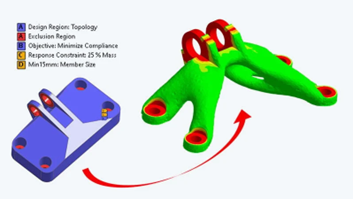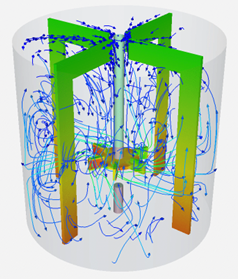

Simulation in academic research is transforming how universities approach innovation—enabling faster experimentation, reduced costs, and deeper scientific discovery through digital tool
Simulation helps researchers test more hypotheses virtually than what is feasible physically — leading to higher-quality publications in less time. Ansys simulation software is empowering Indian researchers to accelerate innovation by virtually testing complex systems across thermal, structural, and biological domains.
Let’s look at three areas where this transformation is not just visible — it’s revolutionary.
In the age of miniaturization, managing heat in compact electronic systems is critical. Tools like Ansys Icepak and Ansys Fluent allow researchers to simulate airflow, predict thermal hotspots, and develop advanced passive cooling strategies. These insights help extend product lifespan and reduce energy consumption without relying on costly physical tests.
Tool Spotlight: Ansys ICEPAK is ideal for electronics cooling simulations where airflow, PCB density, and convection need precise modeling.

Tool Spotlight : Ansys Mechanical enables lightweight and structurally optimized designs through topology optimization, ideal for aerospace, automotive, and 3D-printable components.

In emerging life sciences research, virtual models of bioreactors, drug delivery systems, and microfluidic platforms are now built using Ansys CFX and Ansys Multiphysics. By modeling fluid flow, nutrient gradients, and heat transfer, researchers can optimize conditions for cell growth or diffusion — all without a single wet-lab experiment.
Tool Spotlight: Ansys CFX is tailored for simulating fluid flow, mixing, and heat transfer in bioreactors and microfluidic systems, making it a powerful tool for bioengineering research.

Simulation is no longer the privilege of elite institutions alone. Through initiatives such as cloud-hosted licenses, affordable academic bundles, and faculty development programs, simulation has found its way into smaller engineering colleges, private universities, and research startups. This democratization has led to:
Empower your research, enhance curriculum delivery, and support the creation of Centres of Excellence through best-in-class simulation solutions. Whether it’s for thesis support, laboratory innovation, or long-term academic collaboration, CADFEM is committed to advancing academic excellence. In conclusion, simulation in academic research is no longer optional—it’s a strategic enabler driving faster innovation, deeper insights, and academic excellence.